What is Rapid Eye Technology
How it Works
Applying RET to your Daily Life
In Conclusion
Sign up to get your free worksheet!
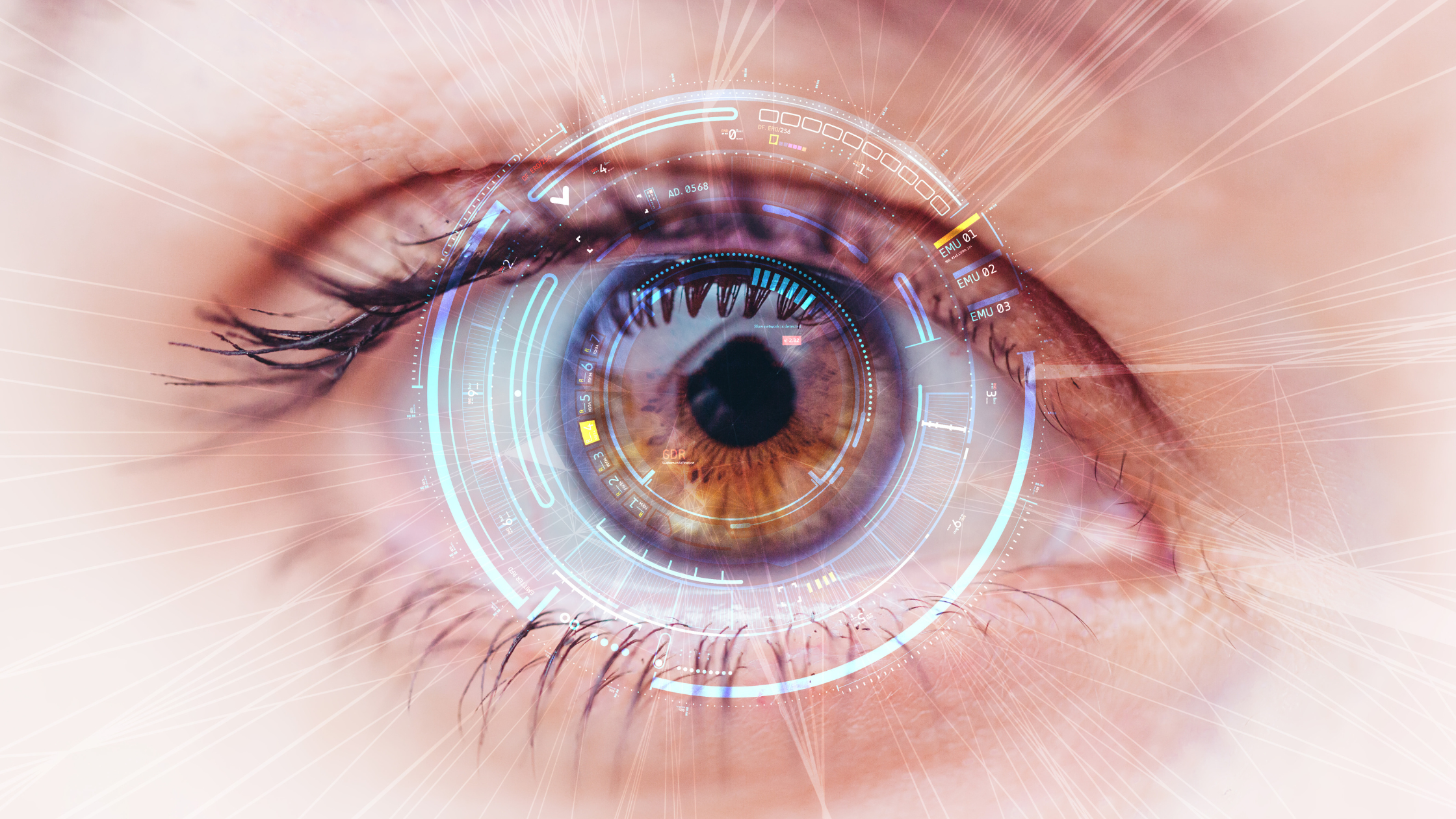

Sign up to get your free worksheet!

In our modern society, we’ve somehow become convinced that if we can just juggle all those balls or spin all those plates, life will be perfect. Unfortunately, so many of the modern inputs actually contribute to stress, overwhelm, and even anxiety or depression. There are several things in our lives that can cause anxiety. There are a number of different things that can help alleviate many of these stressors.
We try to do more in our day, and sleep is the first to go. Unfortunately, in our desire to get more done, sleep deprivation can instigate or worsen anxiety disorders. By making sleep a priority you just might find you are also more productive. There are several things you can do for improving your sleep. Check out my post “How to Sleep Soundly” for several tips.
Digital overload is now the norm in our society. Cell phones, computers, and televisions all keep us “connected.” There are texts and emails that bombard us throughout our day, shows to watch, and video games to play. But what is the cost of all this technology? There is an overload of information that we must process, and this can activate stress hormones and the brain is constantly “on”, leaving us anxious. For many it can be beneficial to set aside some time each day with no technology. You might be surprised how less anxious you feel.
This is another challenge that comes along with technology. Social media sites cover more negative or dramatic news to encourage more hits. Have you heard the term “doomscrolling”? This is where you get sucked into a negative news cycle and find it difficult to disengage. All types of news media consumption can increase emotional distress. Some strategies to limit this type of stress can include turning off smartphone news notifications, set time limits for scrolling, and add other tech-free periods during your day.
Our connection with nature is slipping away as we spend more time on devices. American adults spend more than half of their day on electronic media; and the average adult spends five hours or less in nature per week. The environments we are in can increase or decrease our stress and this in turn impacts our overall health. Being in nature reduces anger, fear, and stress. Consider taking walks or hikes during your day, even a short walk can help lift your spirits. Forest bathing, spending time in a forest, lowers cortisol levels, reduces blood pressure and pulse rate.
Sedentary lifestyle has definitely increased with our technology use and lack of time in nature. It too can affect mental health issues such as depression, anxiety, and self-esteem. It is important to move throughout the day. If you sit for long periods of time, consider setting a timer for every 30 minutes to just get up and walk around or stretch for a few minutes.
Experiencing the blood sugar roller coaster not only impacts your body but also your mood. Unstable blood sugar often starts with a lack of protein and nourishing foods at the beginning of the day. As you go through the day your blood sugar begins to spin out of control. These ups and downs can produce anxiety, worry, and irritability. To avoid this roller coaster, concentrate your meals and snacks around protein, fiber, and healthy fats.
Feeling of not having a clear direction or goal in life and/or job burnout can impact your overall mental health causing problems with anxiety and depression. You may not be able to quit your job right now, but you can invest your time in doing something you are passionate about. Even a couple of hours a week doing something you love can help lift your mood. And who knows…sometimes these passion projects can lead to a new career!
Emotional suppression and unresolved emotional distress have been shown in studies to contribute to anxiety. Post-traumatic stress disorder (PTSD) is an example of unprocessed trauma. Yoga, meditation, mindfulness, exercise, journaling, and reaching out to someone are all strategies that can help.
Lack of meaningful and authentic relationships in one's life can increase the risk of anxiety and depression. Humans are social beings. As the saying goes, “No man is an island.” Some people may need differing levels of connectiveness, but we all need some form of human contact. Suggestions can include reaching out to someone, to get involved in something you feel passionate about, replace screen time with face-to-face time, or join a walking group. Building relationships not only helps you, it can help others too.
Consuming excessive caffeine can trigger anxiety. Caffeine is found not only in coffee but also tea, energy drinks, candy, and more. You can check out my post “How Much Caffeine Do You Need?” To limit caffeine intake, read labels to determine how much you may actually be consuming and find alternatives that don’t contain caffeine. If you feel you need a “hit” of caffeine try a glass of water, take a walk, or practice deep breathing – all of which can improve your energy level.
With so many areas that can cause anxiety in our lives, it can be challenging to reduce it. Yet, implementing some of these strategies can still be helpful.
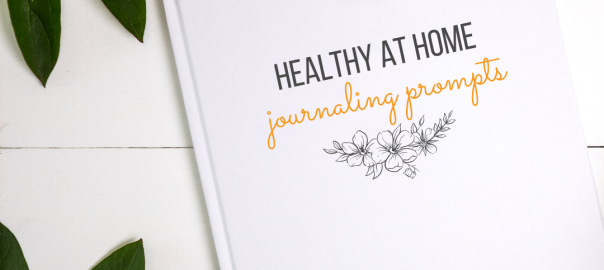
If you're looking to improve your health and wellbeing there may be a strategy to help that you're overlooking. Journaling. It turns out that there are a lot of ways that using a journal can be good for you. It can be a supportive strategy for stress relief, help you work out problems, boost your memory, and has also been shown to be good for mental health.
There are a lot of studies that have been done around the idea of journaling and its benefits. Here are just a few ways that it can be helpful for you:
With all these benefits from journaling you're probably curious as to whether or not it could work for you. Why not give it a try? History is filled with people who journaled – Beatrix Potter, Marie Curie, Benjamin Franklin, Thomas Edison, Lewis Carroll, Leonardo Da Vinci, Mark Twain and so many others. They wouldn't have journaled if they didn't get at some benefit out of it.
Take advantage of the fact that this is a low-cost, easy to do activity that can be good for your health. Spend the next 30 days engaged in a journaling practice and see how you feel at the end. Chances are you'll notice some benefits and want to keep going.
If you're stuck for something to journal about I've got your covered. Here are 50 topics, pick one at random and spend a few minutes each day journaling about it.
1. What does it mean to you to be healthy?
2. What have been your biggest health struggles while being at home?
3. How has your mental health been?
4. What has been giving you anxiety?
5. What are your biggest fears during quarantine?
6. How has your physical health changed?
7. What weight trends have you noticed recently?
8. How has your diet changed since spending more time at home?
9. What is causing you the most worries?
10. How has your exercise routine changed?
11. Are there any home workouts you have tried?
12. Pick at least 3 new at-home workouts you can try in the next week.
13. Pick an exercise you can do with others you live with.
14. What do you think is the most important aspect of nutrition?
15. What are some healthier food items you can add while at home?
16. To improve your nutrition, try adding some structure to your day, then journal about your experience.
17. How have your cravings changed since you have been home?
18. Do you feel you are a boredom eater?
19. Have you noticed any emotional eating tendencies?
20. Go outside to walk and get fresh air, then journal how you feel afterwards.
21. What is a way you can embrace and take advantage of being at home?
22. What are the main sources of your stress lately?
23. What are some stress-relieving activities you have tried?
24. What hobbies have been keeping you busy?
25. How are you dealing with your kids’ health and wellness while being at home more often?
26. In what ways are your kids getting exercise?
27. How are you focusing on proper nutrition for your kids?
28. Try creating a new daily routine that encourages healthy habits.
29. What are 5 things you miss from before you were quarantined?
30. What are 5 things you look forward to when things get back to normal?
31. Name 5 people you can’t wait to spend more time with.
32. What are 5 things you can be grateful for right now?
33. Make a list of healthy snacks you can add to your diet.
34. How have you been socializing lately?
35. List some ways you can reach out to people more.
36. What is something you have always wanted to try?
37. If your productivity is suffering, what are some reasons you think that is?
38. Give yourself a break – what are some things you believe you have done right?
39. List self-care activities you have participated in it while being at home.
40. List some NEW self-care activities for your shelter-in-place time?
41. What is a creative activity you can try while being at home?
42. List the main things that have been on your mind lately.
43. When you think of how you spend your time when you are bored, what comes to mind first?
44. When the shelter in place orders are lifted, what is a way you can get out more?
45. How has quarantine changed your mindset?
46. What do you think you took for granted before quarantine?
47. Have you read any books while in isolation?
48. How do you think life will be different moving forward.
49. What are some changes you have made that have improved your health so far?
50. List 10 ways you can be physically and mentally healthier while at home.
Feel free to share this post, and list of ideas, with the people you love and enjoy journaling!
SourcesKing, L. A. (2001). The Health Benefits of Writing about Life Goals. Personality and Social Psychology Bulletin, 27(7), 798–807.
Mueller, P. A., & Oppenheimer, D. M. (2014). The Pen Is Mightier Than the Keyboard: Advantages of Longhand Over Laptop Note Taking. Psychological Science, 25(6), 1159–1168.
Murphy, M. Neuroscience Explains Why You Need To Write Down Your Goals If You Actually Want To Achieve Them. Forbes. April 15, 2018.
Willis, J. The Brain-Based Benefits of Writing for Math and Science Learning. Edutopia.org. July 11.2011. Accessed June 5, 2020.
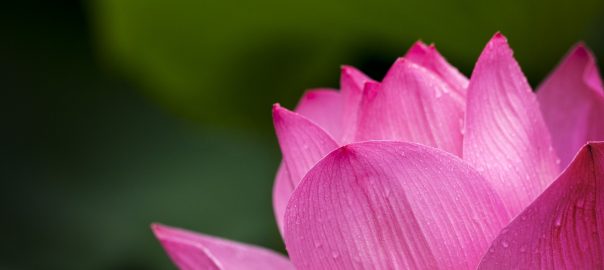
Meditation, especially mindfulness meditation, is getting a lot of attention these days. As people begin to really understand and accept the idea of a mind-body-wellness connection, this practice is becoming more popular. And studies show that meditation has a wide range of health benefits:
Many people can be hesitant or nervous about starting a practice. That’s because most people equate meditation with sitting still for hours, possibly in lotus position (if your knees bend that far), hands in a mudra position, all while chanting Om and clearing your mind of all thought. While that can, as does, work for some people, for many other’s that simply isn’t going to cut it.
We tend to forget that we are all bio-individual human beings. Mind and body. So just as one particular diet is not going to work for every single human on the face of the planet, there is no one single meditation practice that works for everyone either. It’s important to find a practice that works for you, that means one that you are comfortable with and are willing to continue to practice.
Meditation is not meant to be overwhelming. It can be simple and enjoyable. It can even be something simple like a gratitude practice one to two times per day. If you want to start or improve your meditation practice without stress, however, there are a number of things you need to know. Getting a good start will help you enjoy the process of learning, support you while you find what works for you, and increases your ability to maintain a balanced meditation practice.
Unless you’re using one of the meditation apps listed below, be sure to turn off your cellphone so that you are not interrupted while you’re trying to meditate. Even if you are using an app, set it to do not disturb so that you won’t be in the middle of a session when your phone goes off.
There are a number of resources out there that can help you as you learn to build your practice. These include meditation apps and books. Don’t forget to invest in a comfy pair of yoga pants, and maybe even a yoga mat or a zafu meditation pillow, if you’re going to do a more traditional style of meditation.
Beyond Meditation: Making Mindfulness Accessible for Everyone
This book is an essential resource for anyone seeking to understand the effect mindfulness has in one’s life journey. It is filled with practical techniques, guided meditations, stories, and other nuggets of wisdom that can help ease your journey through the world.
The beauty of meditation is how many different ways there are to practice it and how easy it can be. By incorporating a meditation practice into your life you'll achieve both physical and mental benefits. Using the tips and resources listed above you’ll become skillful at this wonderful practice, developing a healthful habit that you can enjoy for the rest of your life.
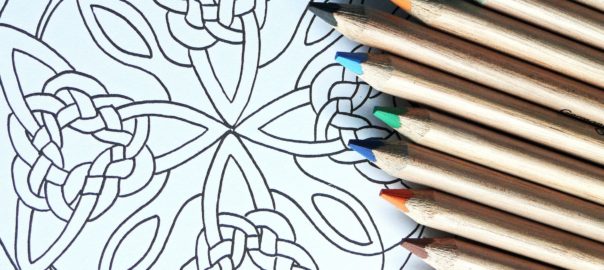
When you first think of coloring, you might picture children with bunches of crayons excitedly coloring in books with their favorite cartoon characters. But there’s a growing trend of adults that enjoy coloring. This has brought about the release of more complex coloring sheets and books designed exclusively for adults.
Many adults have discovered that not only is coloring fun, it also has health benefits, too. As a form of self-care (and self-care is one of my "ingredients for a healthy life") coloring books are right up there for a simple, easy way to take a break. If you’ve been thinking about adding coloring books to your self-care strategy, here are some of the ways this hobby can help support better health:
According to a study published in the Art Therapy: Journal of the American Art Therapy Association, coloring in mandala or geometric patterns appears to lower stress and anxiety levels.
When your body is stressed it produces cortisol. In small doses this hormone can be beneficial, helping you get through a nerve-wracking speech or boosting your energy when you're in the middle of a crisis such as a car accident. Too much cortisol over an extended period of time can lead to health problems. Problems like type 2 diabetes, obesity, high blood pressure, and anxiety.
While coloring doesn’t prevent you from producing cortisol, it’s believed to help lower your cortisol levels. This may be because coloring allows you to get into the creative zone and focus on something enjoyable, rather than worrying about your problems. This, in turn, can help you to relax and release the tension in your body.
One of the conclusions of the Art Therapy study was that “It seems that the complexity and structure of the plaid and mandala designs drew the participants into a meditative-like state that helped reduce their anxiety.”
Besides easing stress, coloring can also improve your mood. This could be due in part to the fact that no one is judging your art. In many ways, coloring is a freeing experience for adults. It may also be because coloring can lead to something called flow.
Developed by positive psychology cofounder, Mihaly Csikszentmihalyi, flow is the concept of a highly focused mental state. When in a state of flow you are removing outside distractions. Using coloring as something to create that flow, you let go of stress (as mentioned above) and are focusing the simple act of coloring. This can provide space which allows you to unwind. Your flow state can then boost creativity, productivity, and positivity.
Let's face it, our lives are immersed in technology. Your phone, your watch, your computer, tablet, and television are all highly technical and always pulling for your attention. Even our homes are becoming smarter and more high tech. Doorbells, lights, heating systems, refrigerator, and more are requiring us to tap into technology. All of that technology interface can be overwhelming, overstimulating, and somewhat stressful. It feels like you are always surrounded. That's because you are.
Yet with just your imagination, some paper, and a few coloring tools you can set aside some me-time and take a break from all that technology. Your brain will actually function better after a break and you'll feel calmer too.
Another advantage of coloring is that it improves your focus. Many people find that coloring while listening to webinars or lectures makes it easier to absorb the information. Some of this may be due to an innate tendency to be a kinesthetic, or hands-on learner. But even those who aren't typically kinesthetic learners may benefit. Many people find that keeping their hands busy, means their mind is less likely to wander.
Because coloring gives you better focus and more clarity, it can also be a good activity to do before you sit down to set goals or develop new strategies. Many highly creative people, such as Albert Einstein and Thomas Edison, found answers to problems they were working on when they took a break and didn't focus on the problem. The creativity required for coloring may help you think of new ways to tackle your goals and get the results you're looking for.
Many people suppress their artistic impulses telling themselves that they simply aren't creative. The truth is we are all creative. We all have that spark within us. The beauty of adult coloring books is that when you're coloring it's a no pressure situation. You're not expecting to have your coloring pages hung in a famous museum. You're simply coloring. And you don't even have to color inside the lines if you don't want to. You can make green clouds, pink skies, or anything your imagination can conjure up. It's a totally personal choice of what you color, what colors you choose, and how you put everything together.
Coloring is one of those activities that can be done anywhere. There are even small books or tiny coloring kits that can be tucked into a purse or a backpack to have at the ready. Perfect for long waits at the department of motor vehicles or alone at a coffee shop. Wherever you are and whatever time you have available, coloring can fill in the gaps and give you a healthy break.
If you love to color and are looking for new sources of coloring material be sure to check out my ebook, Mira's Marvelous Mandalas with 55 ready to print beautiful mandala designs to bring you hours of creative fun and mindfulness.
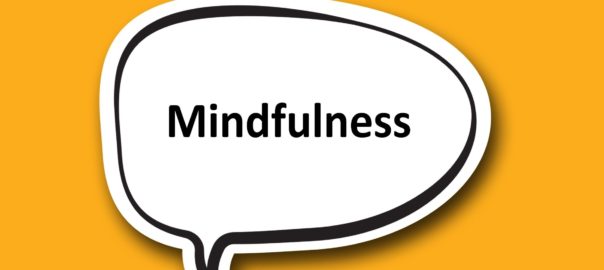
Over the years I've developed a habit of choosing a word to serve as my intention for the year. This year the word is mindfulness. As I go through each year I reflect frequently on my word and see if I am meeting my reasons for having chosen it.
In past years it has sometimes been a struggle to come up with a word. There are so many to choose from! And finding just the right one that resonates is not as easy as you might think. Usually I wind up taking the time from Christmas until somewhere after the New Year to identify a word.
This year, as I worked on my new book on meditation I kept coming back to the word and it really resonated with me. Each time I thought about it, wrote about it, saw it on my desk or my computer it caught my attention and made me stop for a moment.
I realized that it flows well from my previous word of Focus.
The dictionary defines mindfulness as
2. Psychology.
One of the things that appeals to me about choosing this word is how much it resonates with our need for self care. When I work with clients I encourage them to be more mindful about their eating which, of course, has an impact on health. I encourage some sort of self care practice, breathing, meditation, yoga, all of which require a degree of mindfulness.
Moving forward into the new year there will be more of that. Both for them and for me. While I am a holistic health practitioner and I support others to achieve their wellness goals, I know I benefit from these practices as well.
The truth is that mindfulness is a very supportive piece of our overall health and wellness. Studies have shown that it can help lower stress and reduce blood pressure. This, in turn, is good for heart health. [1] Mindfulness can also help with nutrition, satiety, and even weight loss. There are a number of studies about this and even a book on the subject
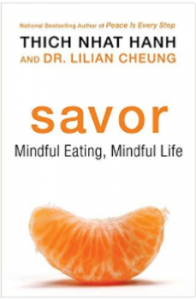
In the year ahead I'm looking forward to deepening my own sense of mindfulness. And I'm excited to share with others, supporting them to develop their own mindfulness practices as part of their wellness plan.
If you're interested these are the words that I've chosen in the past. I find it fascinating to look back at previous years, at the reasons I chose certain words and reflecting on the growth that brought to my life.
I'd like to encourage you to pick a word of your own. It's an interesting exercise and can have some amazing results. If you want to take it one step further you can even go to OneWord365 and put it out there into the universe.
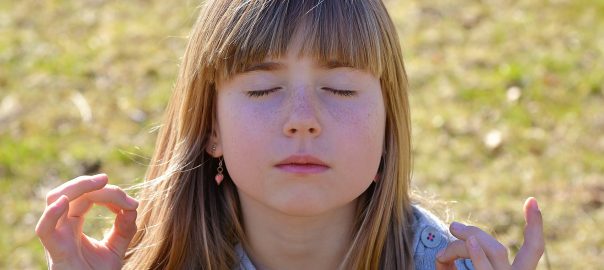
May is National Meditation Month. Recently I saw this article online, Why Our Children Should Be Taught To Meditate In School. This falls into the ‘why didn't I think of that' category. If I had known or thought about this I would have encouraged my children to learn how to meditate when they were younger.
In our ever-increasing-speed society children are being encouraged toward more distractibility, more tools, more stimulation. There's no down time. Although he never really said it, Gandhi is attributed with saying, “There's more to life than increasing it's speed.” Whether Gandhi said it or not it is a valuable sentiment. Somehow, unfortunately, I don't think our modern society is listening.
Everywhere we turn we are surrounded by messages that urge us to move faster, be more productive, encourage speed over mindfulness. There's even a saying that highlights this point…”That's so [insert number] seconds ago.” I know it's meant to be amusing but it highlights the problem that we face staying focused in our daily lives. Everything is presented as needing to be instant, now, online, immediately. It's no wonder that rates of hypertension are rising among our young people. They're being stressed, pressured, and sped up beyond reasonable limits. I personally believe this to be true for adults also.
Instead of joining in to the overwhelming frenzy for fast everything, perhaps we need to re-evaluate things and slow down just a bit. If we taught kids how to meditate in school it's possible that their minds could stop spinning to frantically. They could learn how to recenter themselves and focus. And what a great tool to be able to take forward into adulthood.
Part of the problem is that those stressful and overwhelmed feelings don't stop just because we become adults. Indeed for some adults it's even worse. And we do it to ourselves. We allow ourselves to be sucked into the pressures and the stress that leave us feeling overwhelmed. What if instead of giving in we slowed down. What if we made a choice to make a change? For those of us who are already adults and feeling overwhelmed? Stop for a moment. Take a few deep breaths. That in and of itself is a good beginning. Need some guided resources? Below are a few to get you started
Websites:
APPs:
Steve and I recently took a trip into Houston. We were headed for the Museum of Natural Science but would up making a little detour before visiting the museum. Across the street from the Museum, located at One Hermann Street, is a garden that is open to the public. One part of the garden is an Aromatic Garden. Filled with raised beds of mints, culinary herbs, rosemary and other aromatics it is truly a delight for the senses.
We wandered through the beds delighting in the plantings and stroking the different plants to release their scents, admiring how many different kinds of mints and basils and thymes, and more there are. The smell, the texture, the setting all combined to make a very relaxing and delightful stroll. I confess that my hands smelled quite delicious by the time we were done.
Next door to the Aromatic Garden is the Rose Garden. Abounding with blooms of all sizes and colors we wandered from bed to bed exclaiming over the different colors and scents. Some of the showiest roses had no scent at all while some were so overpoweringly perfume-y that one small sniff was more than enough.
I could feel my blood pressure dropping and a sense of calm envelop me as we enjoyed both of these gardens. It was a moment of mindful meditation. Even now, thinking about them as I write I find a peaceful feeling rising forth. Such is the power of scent and beauty that it can help us to slow down and enjoy the moment. Not for nothing do we have the phrase “take time to smell the roses.”
While I have aromatic herbs in my garden I'm now considering adding some roses to I can recreate a small dose of the experience we had this morning for those days when I can't get all the way into the city. If you have a small corner of your garden available you might want to consider doing the same.
photo courtesy of Stan Shebs | Wikimedia Commons
It is important for us to take time out of our hectic, frequently over-scheduled lives to decompress. For many people that takes the form of yoga, journaling, or a spiritual or meditative practice. I often have people tell me that they don't know how to get started or they can't focus enough to take those few beneficial moments to re-center themselves. Guided meditations can be a good way to get started if you are out of practice or just beginning a centering practice of your own.
 As a Nutrition Educator with a holistic focus to my practice I believe it is important to do more than just pay attention to the food we eat. We need to nourish our whole being; that includes our brains, our emotions, and our spirits.
As a Nutrition Educator with a holistic focus to my practice I believe it is important to do more than just pay attention to the food we eat. We need to nourish our whole being; that includes our brains, our emotions, and our spirits.
I am not a doctor. The information on this website should not be considered medical advice and is not intended to treat, diagnose, prevent or cure any conditions, physical or otherwise. Information provided on this website has not been reviewed or approved by any federal, state, or local agency or healthcare group. Opinions expressed are solely those of the author and do not represent any particular individual or professional group. © 2006-2024 Mira Dessy & The Ingredient Guru. All rights reserved.